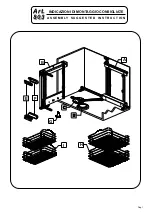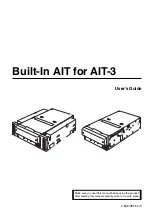
TCO
Reinvented
Copyright IBM Corporation 2009
17
Appendix: Cost Savings Formulas
The formulas below allow you to compare the environmental savings of your current
storage solution with the savings you can realize using the XIV storage solution. We have
provided examples for Medium Density Fast Rotation (MDFR) drives in 146 GB, 300 GB,
and 450 GB sizes, and in RAID-1 and RAID-5 (5+1) configurations. To make similar
calculations for a RAID-6 (4+2) installation, simply replace the 0.8 coefficient by 0.75.
Floor space savings
With higher density drives; the XIV system can meet the same needs using fewer drives.
To determine the savings in floor space from the XIV system’s use of high density drives,
use values relevant to your storage operation in the formulas below.
►
To compare RAID-1 drives to XIV's VHDSR drives, use the following formula:
% Savings in Floor Space = {1 - (Your FC Drive Size) / (the
XIV system High Density Drive Size)} * 100
For example
: Assuming you are comparing your existing 450 GB drives to XIV's 1
TB (1000 GB) drives, the floor space savings is calculated as follows:
%
%
S
S
a
a
v
v
i
i
n
n
g
g
s
s
i
i
n
n
F
F
l
l
o
o
o
o
r
r
S
S
p
p
a
a
c
c
e
e = {1 - (450) / (1000)} * 100
=
=
5
5
5
5
%
%
►
To compare RAID-5 drives to
XIV’s VHDSR drives, use the following formula:
% Savings in Floor Space = {1 - 0.8(Your FC Drive Size)
/ 0.5(the XIV system High Density Drive Size)} * 100
For example
: Assuming you are comparing your existing RAID-5 300 GB drives
to XIV's 1 TB (1000 GB) drives, the floor space savings is calculated as follows:
%
%
S
S
a
a
v
v
i
i
n
n
g
g
s
s
i
i
n
n
F
F
l
l
o
o
o
o
r
r
S
S
p
p
a
a
c
c
e
e
= {1 – 0.8*(300) / 0.5*(1000)} *
100
=
=
5
5
2
2
%
%
To calculate your actual savings, multiply the resulting percentage by the real cost of the
floor space currently in use by these disk drives at your data center.
Your potential savings may be even greater should your data center be at its physical
limits. Switching to the XIV system may allow renovations or a move to a larger facility to
be delayed or avoided, saving the expense and disruption such a change would entail.


































